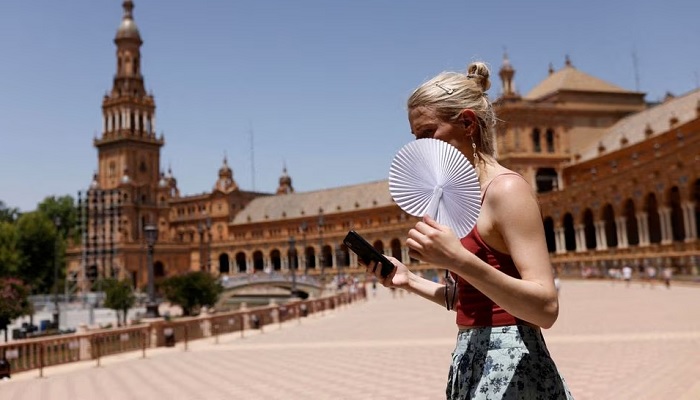Concrete problems: How floors, walls are adding burn to heatwaves
Surface temperatures are crucial in determining overall heat in area and pose health risks during extreme heat events
July 31, 2023

Experiencing a serious burn can happen in the blink of an eye, as revealed by Dr Kevin Foster, director of the Arizona Burn Center in Phoenix. On scorching days, asphalt and concrete surfaces under direct sunlight can reach incredibly high temperatures, soaring up to 82 degrees Celsius (180 degrees Fahrenheit), a Reuters report said.
Phoenix has been grappling with intense heat, enduring 30 consecutive days of temperatures above 43 degrees Celsius (115 degrees Fahrenheit) in July, with another heat wave predicted for the city. Similarly, Europe has witnessed record-breaking high temperatures this summer, and much of the world anticipates prolonged heat waves well into August.
The elevated temperatures in Phoenix have resulted in numerous cases of burns among individuals who accidentally fell on the scorching ground or touched surfaces that were much hotter than the recorded air temperature.
Surface temperatures are crucial in determining the overall heat in an area and pose health risks during extreme heat events. In heat waves, surfaces exposed to the sun absorb and reflect a significant amount of its energy, causing their temperatures to rise dramatically.
These warm surfaces, in turn, transfer heat to the surrounding air, elevating the overall air temperature.
Certain surfaces, such as grass or soil, absorb less heat due to their permeability and moisture content. However, construction materials like asphalt or concrete can absorb as much as 95% of the sun's energy, emitting it back into the surrounding atmosphere.
When meteorologists record a temperature of 38 degrees Celsius (100 degrees Fahrenheit) on their thermometers, they measure the air temperature several feet above the surface. However, at this air temperature, surfaces like asphalt or cement can reach temperatures higher than 65 degrees Celsius (149 degrees Fahrenheit), which can lead to skin burns. It is crucial to be aware of these surface temperatures and take necessary precautions to avoid injuries during extreme heat conditions.
Urban heat islands
The process of urban development profoundly changes the landscape. Natural and permeable surfaces are replaced by impermeable structures like buildings and roads.
This creates what climatologists call “urban heat islands”, areas within cities that experience significantly higher temperatures compared to nearby rural regions.
These are also areas with high concentrations of people. In Europe, nearly half of schools and hospitals in cities are located in urban heat islands, exposing vulnerable populations to health-threatening temperatures as climate change impacts worsen, according to the European Union's environment agency.
According to the US Environmental Protection Agency, the annual mean air temperature of a city with 1 million or more people can be 1 to 3°C (1.8 to 5.4°F) warmer than its surrounding areas. On a clear, calm night, this temperature difference can even reach as high as 12°C (22°F) compared to rural areas.
Urban heat islands are created through a combination of factors. Green spaces and vegetation play a vital role in reducing surface temperatures through evapotranspiration, where plants release water to the surrounding air, dissipating ambient heat.
Meanwhile, urban geometry, with its obstructive structures, traps heat at night. Additionally, urban surfaces absorb and store more heat compared to natural ground cover, raising temperatures further.
Understanding these factors helps us create cooler and more sustainable cities.
Thermal satellite images reveal cities' thermal profiles, areas that experience warmer and cooler temperatures based on the local landscape.
The difference parks make in cities' temperatures shows the critical balance between urban development and green spaces, which help mitigate high temperatures.
Even small green spaces can make a difference. In Greece, city planners in Athens have created “pocket parks”, transforming small plots once ridden with garbage and weeds.
“It’s about creating green spaces, lowering the temperatures, giving quality of life and creating new reference points inside the city,” Athens Mayor Kostas Bakoyannis said.









